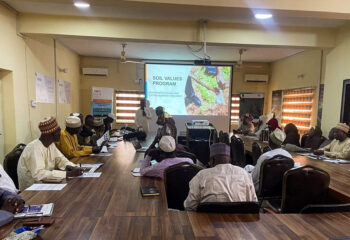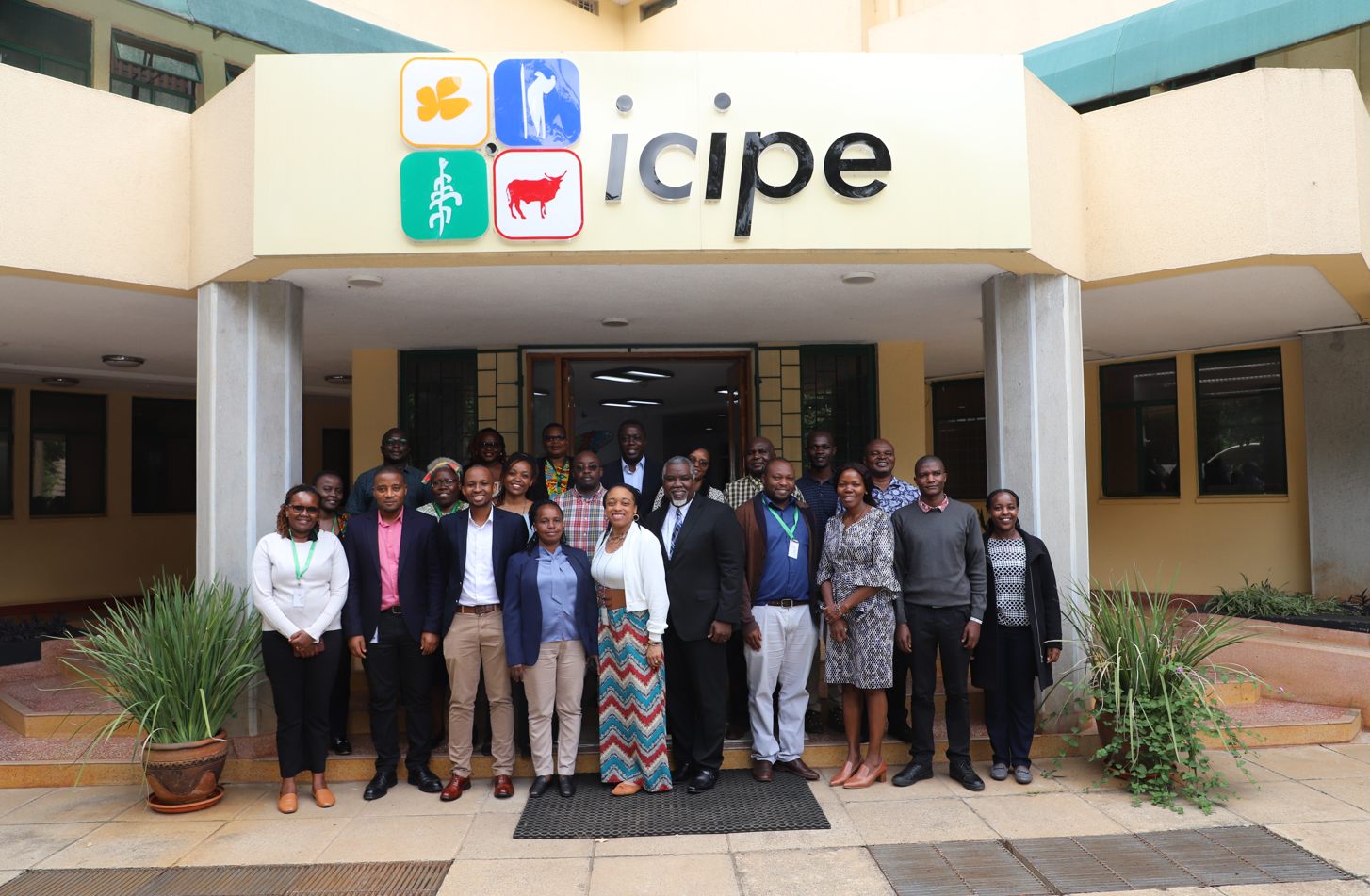In our previous blog, Fertilizer – A Foundation for Food Security, we discussed the history of fertilizer, from its origins to its modern uses in combating crises of food security. Today, fertilizer is a globally distributed commodity in high demand. It is as important to the smallholder farmers’ business as the seeds they plant or the tools they use for harvest. So let’s demystify the role that common fertilizer nutrients play in crop growth.
At IFDC, we care so much about fertilizer because, for the smallholder farmer, correct fertilizer application can be the difference between feast and famine. Think of fertilizer like the meals you eat for breakfast, lunch, and dinner. The meals contain protein, carbohydrates, and fiber that sustain you and give you energy. A regular diet is important for your overall health and wellness.
In the farming world, healthy soil with added fertilizer acts as a plant’s “regular diet.”
Soils differ greatly in their ability to provide plants with a regular diet. Most soils do not contain enough nutrients for optimal crop health and growth, because plants “consume” available nutrients over time. Some soils become degraded through a process known as “nutrient mining,” where cropping without added fertilizers depletes the soil’s natural supply of nutrients. Fertilizer, when properly used, adds and replenishes nutrients to the soil to boost plant health, increasing the growth rate and total crop yield (which means more crops and, therefore, the opportunity to take extra crops to the market). In sub-Saharan Africa, years of nutrient mining have resulted in detrimental effects on farm yields, particularly for smallholder farmers. In these cases, using fertilizer as a part of a suite of good agricultural practices is more important than ever, as those degraded soils no longer have enough nutrients to produce healthy crops.
But what are these nutrients that plants need so much? Plant growth requires three “primary nutrients”: nitrogen (N), phosphorus (P), and potassium (K). This trio, like protein, carbohydrates, and fiber in the human body, plays a vital role in plant growth, from the seed to the stem.
The nitrogen used in fertilizer products today comes from the air all around us. It is converted to ammonia through the Haber-Bosch process. Ammonia is the main ingredient in virtually all N fertilizers, including urea. N is primarily responsible for vegetative growth and plays an essential role in several enzyme reactions in the plant. N assimilation into amino acids is the building block for protein in the plant. The second primary nutrient, phosphorus, is a major component in plant DNA and RNA. This nutrient is mined from phosphate rock deposits found all over the world – and then processed into a form usable by plants. The plant needs P from the moment the seed germinates, as it is a critical nutrient in root development, crop maturity, and seed production. Lastly, the plant needs potassium for enzyme activation, withstanding drastic changes in climate, and warding off pests. Like P, the production of K begins at a mine.
These three nutrients are the most common building blocks of fertilizer products sold around the world. All crops and soils have different nutrient needs. In Bangladesh, for example, where there is an abundance of rice farmers, urea, the most concentrated form of N fertilizer, is extremely popular because rice’s greatest nutrient need is nitrogen. In other crops and regions, blends of N, P, and K – and sometimes other nutrients – are necessary. To maximize production, the plant’s diet must be balanced. In other words, all its nutrient needs must be met. In the most agriculturally productive regions of the world, crops receive a complete and balanced diet from fertilizer formulated to supply not only N, P, and K but also secondary (e.g., calcium and magnesium) and micronutrients (e.g., zinc).
It is important to keep in mind that fertilizer is just one part of a package that plays into agriculture as a whole. Good agricultural practices, including irrigation and soil fertility management, quality seeds, judicious fertilizer use, and a public policy environment conducive to market development, all come together to create a foundation for a successful agriculture sector.
Fertilizer is not scary. When used the correct way, it can transform a smallholder farmer’s business, help him or her earn more money, and supply vital food crops to a hungry population. As the world has grown, fertilizer science has become an imperative tool in fighting the challenge of global hunger. Looking forward to the future, we will continue to find new solutions to soil health and plant nutrition that are affordable for farmers and will continue to empower them to feed our growing population.




